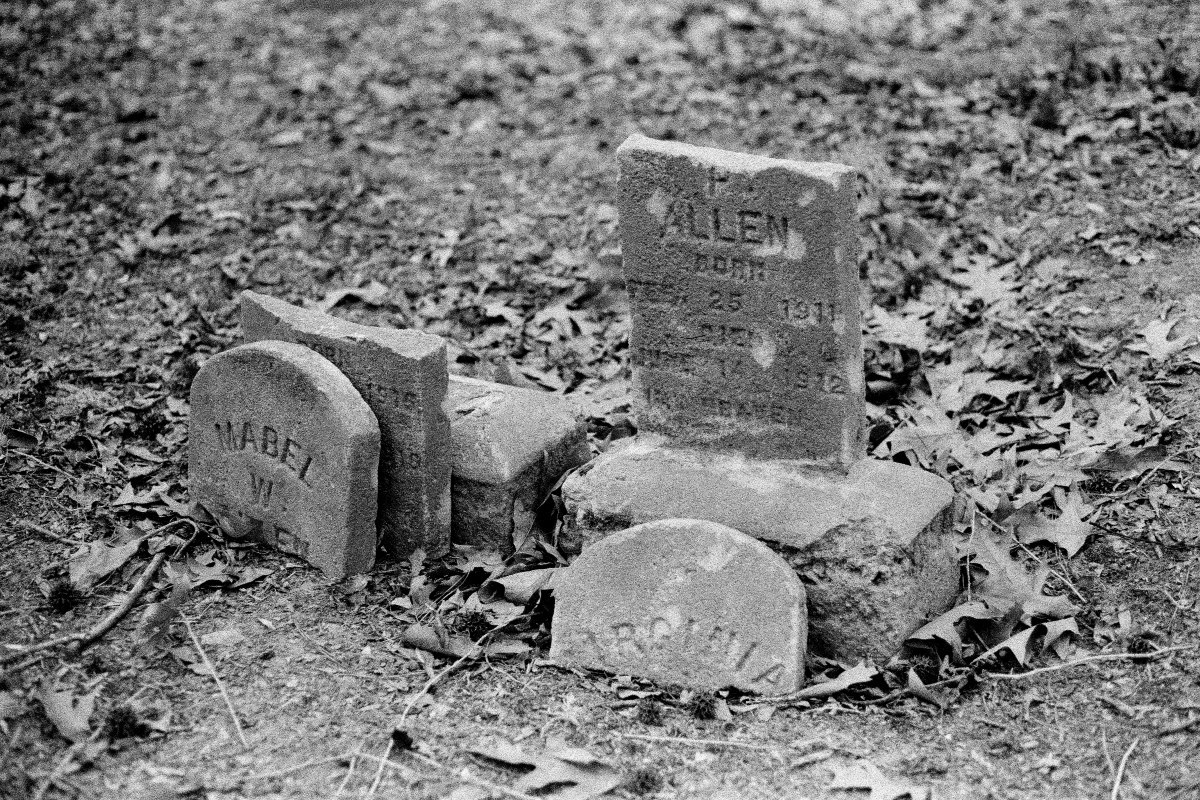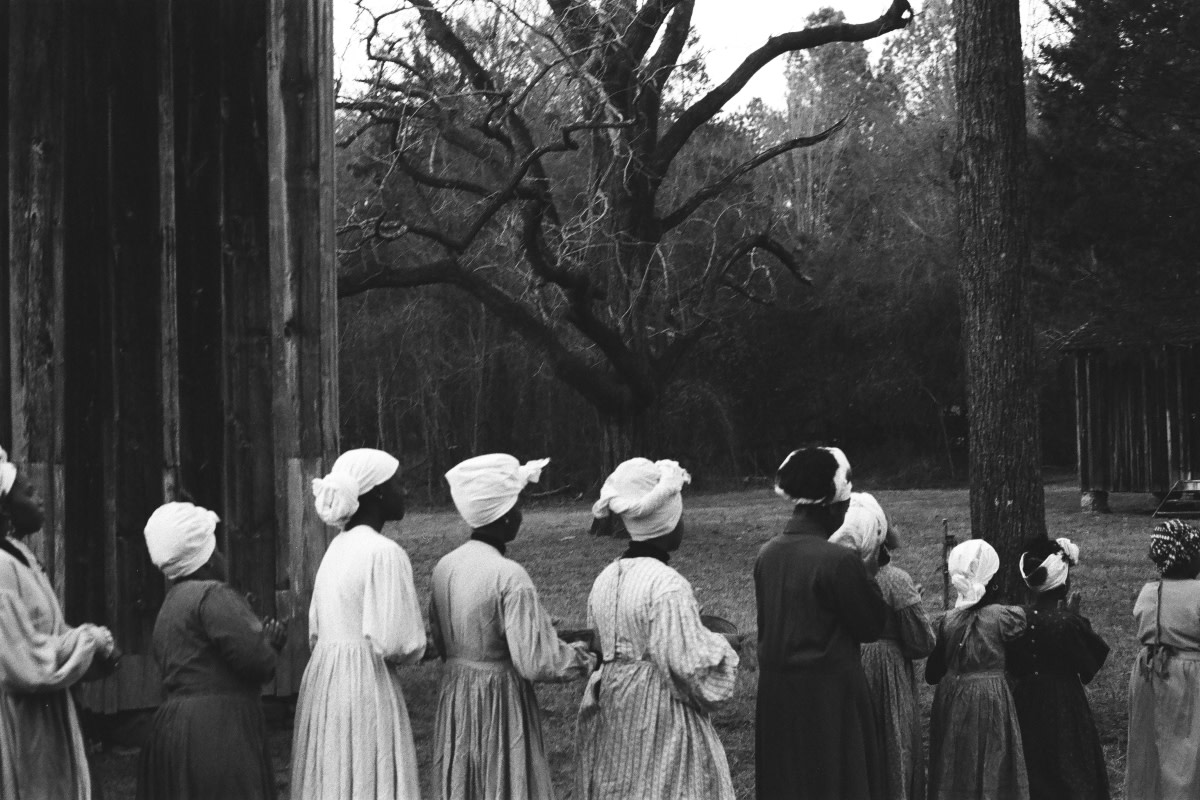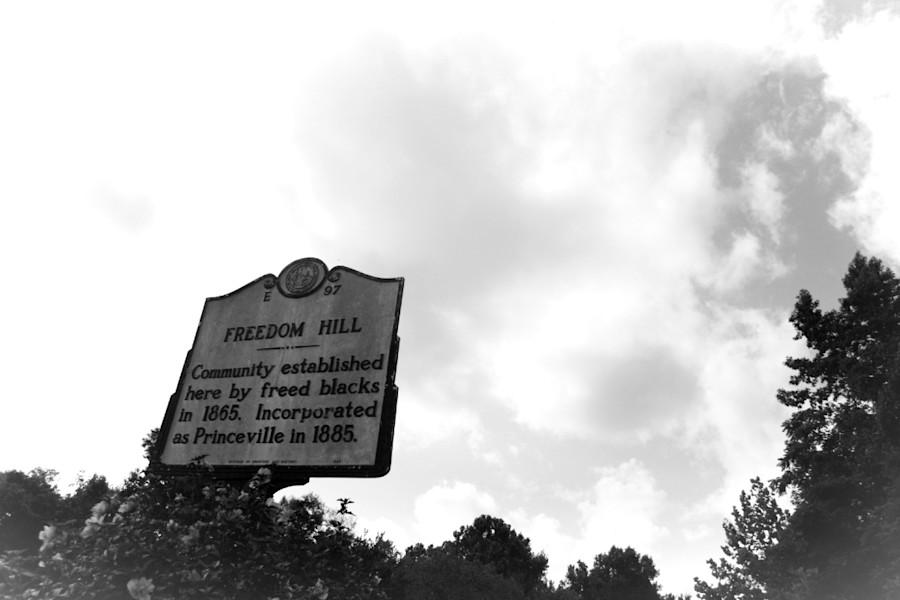The following interview marks the first public articulation in developing a Black Southern tech studies, an ongoing epistemological, creative, and archival project by Logic(s) editorial fellows Jasmine Lewis and Ra’il I’Nasah Kiam, as we seek to center the Black US South as a site of technological production, thought, and critique. Simply put, despite its historic role in innovating and guiding evolutions of tech, the South is rarely considered in discussions around tech’s pasts, present, and potential futures—the South as lived and created by Black folks, even less so. But in the eternal words of rapper and instrumentalist André 3000, “the South got something to say.” Our goal is to turn the volume up. We are building toward not just a specific discipline of a Black Southern tech studies but toward a BSTS infrastructure that can sustain innumerable explorations and interrogations of how the South has shaped technologies on a wider scale. Illuminating how the Black South in particular, and the worlds Black Southerners have built, can inform a liberated tech, and a liberated future.
As a part of this work, we are conducting a series of interviews with artists, organizers, and scholars who center the Black South in their work. We introduce this series by speaking with Zandria Robinson, a sociologist, writer, and associate professor of Black studies at Georgetown University. She is also a storyteller of the South, whose work straddles the supposed lines between the ethnographic, the autobiographical, and the otherworldly. Our conversation spans her approach to these modalities, and how we, too, can most ethically engage with a Black South that is often submerged and unseen but nonetheless brims with so much life.
Logic(s): Tell us about yourself, your work, and how you place yourself within this constellation called the Black South.
Zandria: I’m from Memphis, Tennessee, she/her/GloRilla. My work has always been about the South, but I didn’t know it at first, because I didn’t understand myself as a Southerner, per se, growing up. I just thought that all Black people were like us, and I was astonished to find that there were Yankees in the world and that they hated on us—this is a discovery I made when I went to graduate school in Chicago. I was always kind of doing ethnography. I was reading Black Southern women writers, and reading about hoodoo things, and so it just made sense for me to try to pursue this work, and at graduate level. It was amazing to me to get to graduate school and to discover that I was a Southerner, and to discover that there was this idea that once all the Black [Southern] people left for the Great Migration, apparently we just didn’t even exist anymore, despite the inconvenient fact of the whole civil rights movement. So I had a bone to pick, and I just continued picking it.

I’ve written an ethnography of Memphis that’s about Black Southern identity called This Ain’t Chicago: Race, Class, and Regional Identity in the Post-Soul South, and then a book with a colleague from graduate school, who is a Yankee, but we both hated the Chicago school of sociology and its dominance, and he’s from Philly. We wrote Chocolate Cities: The Black Map of American Life, which is trying to think about, “Hey, what if the whole America is South?” As Malcolm X said, “As long as you south of the Canadian border, you South.” Thinking with the ideas of region, Blackness, identity, gender, and sexuality has been my main work, and a lot of the way that I got into this work and to make my case to the Yankees was through Southern hip-hop. I was like, it might not be a bunch of contemporary ethnographies of the South, and that’s a resource issue, but we have these other kinds of ethnographers. We have Outkast; we have Gangsta Boo; we have La Chat; we have Mia X, who are telling us stories about these communities. And then there was that mini-explosion of Southern film about Black folks: Hustle and Flow, ATL, Idlewild. It was really giving a history, and a present reality, and also a future. Idlewild in particular was a kind of time-traveling, time-bending thing where we’re trying to see, Where do we come from, and where will we be going?
So, I had to leave the field, leave the traditional academic discipline, to find what I was looking for. Is it a different place now? Clearly, it [is different] than it was in the early 2000s, but it continues to signal something about where we are as a region and as a people from a region.
Logic(s): A lot of your work is deeply personal, deeply felt. It’s autobiographical, and it’s spiritual. Can you walk us through the development of your interdisciplinary practice, and how you maintain your epistemological balance?
Zandria: When I think about what is my guiding epistemic perspective, if I said one that’s in the academy, it’s obviously Black studies, which has a lot of capaciousness and is a fundamentally interdisciplinary practice. But it’s really being a Black woman from the South, raised by Black-ass people from the South, where it’s our way of knowing the world. You got to get a little bit from here, and get a little bit from there. And you can’t ever trust the mainline thing. You just can’t trust the mainline thing.

As a child, you’re raised with these Southern epistemic ways of seeing the world, but also we’re in the West, and we’re being trained in this Western thinking. So there’s always this mind/body dualism battle in my mind that’s completely different from the felt ways, the sensory ways that I’m being asked to understand the world as a child, and then I’m seeing adults around me understand the world in those ways.
I think that’s one of our primary technologies. Toni Morrison called it the easy acceptance of signs.1 Superstitions, folktales, myths—that’s our way of knowing the world that we brought with us, that we modified here. That’s really counter to a particular kind of empiricism because every discipline, for the most part—American discipline, Western discipline—has developed its empirical ways of knowing, its epistemic being from that kind of I-think-therefore-I-am-ness, that notion of objective reality, the Cartesian code, the mind/body dualism.
All of that is there, and it is wrong. It’s so wrong. It’s ruining the earth. It’s terrible for everybody. This is where our Black Southern perspectives, our Black perspectives, expand beyond [and] are useful for everyone. Everyone is suffering because we aren’t using our bodies of technologies in ways that aren’t for capital. Everybody is suffering because we aren’t tuned into spirit. That’s where we are. I came into the academy with this academic perspective, and as I said, I studied literature first—Black women’s literature—so I’m super into ghosts. I’m super into haunting.
Logic(s): You talked about the epistemic nature of your work being painted by Black Southern artists, and since Black Southern artistry and Black Southern sonics comes up a lot in your work, can you share more about how these different forms of musicality and these technologies of Black Southern soulfulness and sound inspire you? And how you feel it can act as a bridge towards liberation?
Zandria: I was reminded when you were speaking, of just being a little girl in church and lines singing, “I love the Lord. He heard my cry.” And I would always be so afraid to catch the holy ghost. I knew that what was happening when those people raised their voices together was a conjuring. I couldn’t have said, “This is a conjuring.” And I would be afraid that the spirit would just take me and run me around the church.
It was like a cat-and-mouse thing, I also kind of wanted it to catch me. There was something so profound about the sounds that people were able to make together. I was always keyed into the sound my parents’ voices made. My mother has a heavy voice. My father had a heavy voice. And then it’s just the ways that they articulate and the song-ness of the ways, the tonality of the ways that they spoke. And again, also playing violin, it’s, like, this world of sound around me. There was Saturday morning blues. There was gospel on the way to church. We were so trifling, we only listened to it on the way to church on Sundays—WTIA or AM680. I can hear the crackle of that AM station, and getting ready to get tuned into some other people who do this conjuring sound with their voice.
The subsequent genres that were birthed from that field holler, and the spiritual, and gospel, and blues, soul, and R&B, and neo-soul, and hip-hop. When Southerners were doing it, you could hear the multiple layers of those previous genres in their voice, in a different way than what happened when it moves up to Detroit and becomes Motown. There was just something that was closer to the original referent—closer to the descendent—like the people who didn’t migrate. These forms—to me, I can hear them and be transported anywhere. I can go to the past. I can go to any number of possible futures.
And this is also bass, too. Bass does this. We love a bass. The kind of ruckus rhythm of the earth’s core—we love that. When I think about hip-hop music—in particular, Southern hip-hop—and the things we’ve been able to do with those beat machines, to think with bass and sound, there’s just something. We have a lot of sankofa principles in our music,2 and it’s like we are going back and collecting these ancient sounds to go forward. So I hear a lot of possibility in all of our music, even when it isn’t as evident. Because even the play, the cheekiness, the language—that’s a part of sound that always moved me. What we could do with words, how we can make words sound, how we could make something come out and just be so funny—because laughter is what we need, and it’s what’s going to take us where we’re going. I hear a lot of that in this contemporary Southern music, a lot of trickster stuff there.
Logic(s): Thinking about place and homeland in the South, how have these elements of space, time, and place guided you towards recognizing the transcendence of time and seeing time as nonlinear, and, in a way, cyclical and spiraling? How do they guide you in seeing these intersections between the past, the present, and the future?
Zandria: I think that the Southern city, all Southern cities are places spatially, where you can see the collision of time, to the point where you’re like, “What time is it? What time am I in?” I’m in all times at once because Southern cities were built as basically the economic outposts of rural areas. The city only comes alive when you bring in cotton, or tobacco, or rice to sell, and the city’s wealth is built on that. That’s Atlanta; that’s Birmingham; that’s Memphis; that’s Jackson; that’s New Orleans. And it’s these rural areas that really dominate the ecology and economy of cities, and the vestiges of that are so present.
I’m reminded of an area in southwest Memphis where [the C. H. Nash Museum at] Chucalissa is, which is kind of a remake of an Indigenous community that was there. When you on the expressway, go on 55, and you pass the oil refinery at nighttime it’s all just—the fire’s just popping up. That’s this industrial aspect of the place. You come around the corner; you get off the expressway; there are these shotgun houses built by folks who came up from Mississippi in the early twentieth and mid-twentieth century, this wide-open road that is Highway 61, where people came up from this land. Then you’re on this Indigenous space, and this Black golf course is kind of in that community.
It’s everything, everywhere, all at once. This is all of the time. This is the industrial; this is the rural; this is what came before all of this, the Indigenous histories, the mounds. It’s from these kinds of spaces and places where we can learn how to live in harmony with the earth. One of these things is not like the other, like the oil refinery. But there are lessons for returning to and recreating harmony in how we see these multiple things exist in the South, and that’s thinking about the ecological landscape.
The South really is, and Southern cities in particular, are places where you can see that multiplicity happening and understand the totality of everything that’s happened since we been over here. Understand that going forward, it will continue to be a totality, but we are responsible to organize it in a way that’s more balanced.
Although, also, what the South reminds me of is that time is infinite if we are together, that we should not be operating in any kind of form of scarcity; because we make time. We did that. We did that before we were brought over here. We did that on the boat over here. We literally created [it], but we have to do it together. The South reminds me of that, more so than East Coast cities, or even West Coast cities.
Logic(s): What happens when the Black South is centered in our analysis and our work, especially in this current moment? How can centering the Black South help guide us towards a more complete form of freedom?
Zandria: First, we need to be able to see. The Black South allows us to see it all at once. And once we see how it works together, then we can see how, one, we can work together to dismantle it, but two, how we can build the new things that need to be built. The information, we have it. We just got the new tech and lots of bells and whistles now. Let’s bring those into the fold and govern ourselves accordingly.
But all of this other stuff that when we shine a light on it, we can see everything that’s created this monumental amount of harm. That shit got to go. People have been using the phrase “harm reduction,” and I understand that because there’s an inevitability to harm. But I am definitely about harm elimination, and I think that we have the capacity to do that in community with each other.
The South shows that. The organizing has been happening in the South—which, this is a sidenote, but for some reason people still think that organizing is not happening in the South. That is asinine, and it’s so bothersome to me. But it’s most of the time because they’re only thinking of the internal electoral politics. But the ways that we have organized ourselves to take care of each other—that’s what becomes visible when you put the Black South in the frame: how to be with each other, how to be with the land, how to be with the climate. These are the things that become immediately evident, alongside the harmful mechanisms of power that I think [are] very easy to forget, even if you’re Black. It’s easy to forget if you’re outside of the region.
But that way that we relate to each other, the way that we speak to each other, the way that we sing to each other, the things that we grow and cultivate together, the way that the church is going to get together and pass out COVID tests, the way that the sisters [are] bringing the midwives back, that kind of stuff—that’s not visible. And if you look it up, we’re like, “We ain’t got nothing,” but we making it out of something, and here we go back to the metaphysics. So that’s also what becomes visible if we are witnessing the Black South on multiple frequencies: the metaphysics of aliveness, the metaphysics of thriving, the metaphysics of the new world.
1. “When I began to write, that was the place where I had to go. That’s where the information was. That’s where the images were. That’s where the language, the color came. In these tales, folktales, attitudes, the normal easy acceptance of signs.” Toni Morrison, “Toni Morrison interview” (1988), YouTube, ThamesTV, uploaded August 6, 2019.
2. Sankofa, from the Twi language of the Akan tribe in Ghana, loosely translates to “Go back and get it!” Corresponding with the Akan proverb “Se wo were fi na wosan kofa a yenkyiri” (It is not taboo to fetch what is at risk of being left behind), sankofa is a principle emphasizing the value in gathering elements of the past to build the present and future. See “The Power of Sankofa: Know History,” Carter G. Woodson Center for Interracial Education at Berea College; “Sankofa,” Adinkra Symbols and Meanings.
